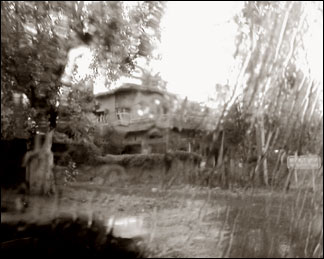The lesser known north-east monsoon
N. Gopal RAJ
A La Nina, the opposite of an El Nino, is generally beneficial for
the south-west monsoon but could it weaken the north-east monsoon?
|

Arrival of monsoon |
As the south-west monsoon draws to a close, the direction of the
surface winds change and the stage is set for the north-east monsoon.
Much of the country is heavily dependent on the south-west monsoon for
most of its annual rainfall.
However, many parts of southern India also receive considerable rain
from the north-east monsoon. Tamil Nadu, in particular, typically gets
nearly half its annual rain during this monsoon. In fact, as much as 60
per cent of the rain that t he State’s coastal regions receive in a year
is from this monsoon.
The north-east monsoon’s arrival is marked by a reversal in the
direction of low-level winds over north coastal Tamil Nadu, according to
Y.E.A. Raj, director of the India Meteorological Department’s regional
centre at Chennai.
Instead of coming from a south-westerly direction, the winds start
blowing from the north-east. After the winds shift, persistent rainfall
over coastal Tamil Nadu is taken to mark the monsoon’s onset.
Between 1901 and 2000, the onset of easterly winds took place between
September 23 and November 1, Dr. Raj wrote in a paper published in
Mausam, the IMD journal. The normal date for this change in wind
direction was October 15.
During the same period of one hundred years, the monsoon’s onset
happened between October 4 and November 11, with the normal date for
onset being October 20.
This year, the reversal in wind direction took place around October
9, according to Dr. Raj. But the easterly winds were still relatively
weak and needed to strengthen for the monsoon onset to occur.
Labelling the two monsoons after the prevailing winds during those
seasons gives the misleading impression that rain is brought to India by
winds blowing from the south-west from June to September and,
subsequently, is transported by winds from the north-east during October
to December, pointed out Sulochana Gadgil of the Indian Institute of
Science. It would perhaps be better to call the two seasons “summer
monsoon” and “post-monsoon.”
As one can readily discern from satellite weather pictures, there is,
in fact, no difference in the basic nature of the cloud systems that
provide rain during the two seasons, said Dr. Gadgil.
Driven by heat from the sun’s rays, a band of clouds, often hundreds
of kilometres long in the east-west direction, forms over the equatorial
Indian Ocean and then moves northward over the Indian subcontinent.
In the case of the summer monsoon, the cloud band ultimately settles
over the plains north of Mumbai. During the post-monsoon season, the
cloud band stays over the country’s southern part.
El Nino effects
A great deal of effort within the country and abroad has gone into
understanding the south-west monsoon, which provides nearly 80 per cent
of India’s countrywide rainfall. The north-east monsoon has, by
contrast, been far less studied. But it has been known for some time
that an El Nino has very different effects on the south-west and
north-east monsoons.
This abnormal warming of the equatorial waters of the central and
eastern Pacific has often been associated with failure of the south-west
monsoon.
But the very same phenomenon appears to have just the opposite effect
on the north-east monsoon, leading to more bountiful rain.
|

